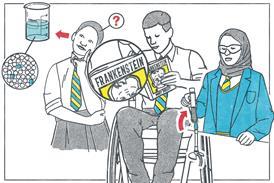Epilepsy - beyond bromide

An historical journey into the treatment of epilepsy, starting with potassium bromide 150 years ago
The brain is made up of billions of nerve cells, each linked by myriad connections (synapses). Chemical messenger molecules (neurotransmitters) pass between these cells, stimulating electrical impulses along their projections (axons). Regular waves of electrical activity are produced in our brains at rest, which increases on exercise or during mental activity.
However if the brain is damaged, either physically or genetically, these regular waves can become disordered, resulting in unpredictable, excessive electrical discharges from the nerve cells. At this time the person loses consciousness, often with jerking movements of limbs - this is an epileptic seizure. The condition affects ca one person in 100, a quarter of whom have their first seizure before their fifth birthday.
Thanks for using Education in Chemistry. You can view one Education in Chemistry article per month as a visitor.

Register for Teach Chemistry for free, unlimited access
Registration is open to all teachers and technicians at secondary schools, colleges and teacher training institutions in the UK and Ireland.
Get all this, plus much more:
- unlimited access to resources, core practical videos and Education in Chemistry articles
- teacher well-being toolkit, personal development resources and online assessments
- applications for funding to support your lessons
Already a Teach Chemistry member? Sign in now.
Not eligible for Teach Chemistry? Sign up for a personal account instead, or you can also access all our resources with Royal Society of Chemistry membership.


